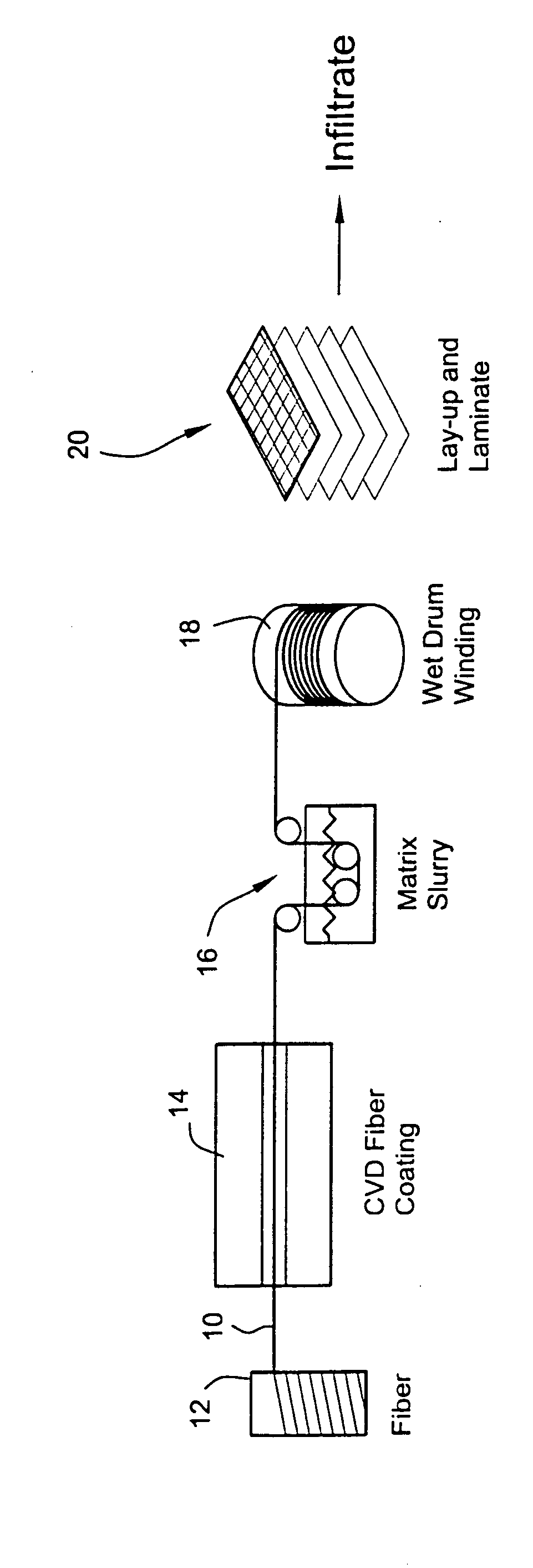CMC process using a water-based prepreg slurry
a technology of ceramic matrix composites and prepregs, which is applied in the direction of ceramic layered products, chemistry apparatus and processes, layered products, etc., can solve the problems of not found applications in gas turbines, ceramic matrix composites (cmcs), particularly those reinforced with continuous fibers, and offer significant damage tolerance and graceful failure modes
- Summary
- Abstract
- Description
- Claims
- Application Information
AI Technical Summary
Benefits of technology
Problems solved by technology
Method used
Image
Examples
Embodiment Construction
[0015] With reference to the FIGURE, a conventional prepreg process used for the fabrication of MI-CMC's begins with an SiC multi-filament fiber tow, typically Hi-Nicalon™ or Sylramic™ fiber. Specifically, the fiber tow 10 is unwound from a wheel or drum 12 and is passed through a housing or chamber 14 where the fibers are coated by means of a conventional chemical vapor deposition (CVD) process. This coating of the fibers, typically with a ceramic material, serves to protect the fibers during composite processing and provides a low strength fiber-matrix interface, thereby enabling the fiber-matrix debonding and fiber pull-out toughening mechanisms. CMC's have typically used carbon as the fiber coating, but now also incorporate boron nitride or silicon-doped boron nitride for increased oxidation resistance.
[0016] Following fiber coating by CVD, the fiber tow is pulled through a matrix slurry vessel 16 containing a non-aqueous preform matrix slurry containing SiC, carbon particulate...
PUM
| Property | Measurement | Unit |
|---|---|---|
| Temperature | aaaaa | aaaaa |
Abstract
Description
Claims
Application Information
 Login to View More
Login to View More - R&D
- Intellectual Property
- Life Sciences
- Materials
- Tech Scout
- Unparalleled Data Quality
- Higher Quality Content
- 60% Fewer Hallucinations
Browse by: Latest US Patents, China's latest patents, Technical Efficacy Thesaurus, Application Domain, Technology Topic, Popular Technical Reports.
© 2025 PatSnap. All rights reserved.Legal|Privacy policy|Modern Slavery Act Transparency Statement|Sitemap|About US| Contact US: help@patsnap.com


